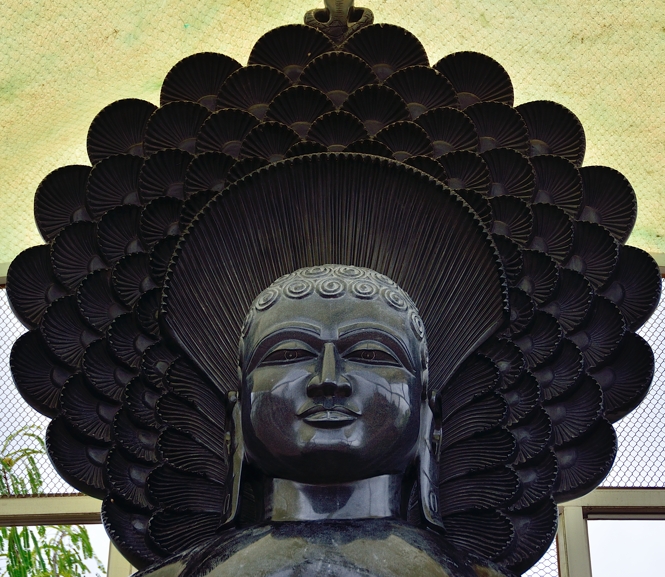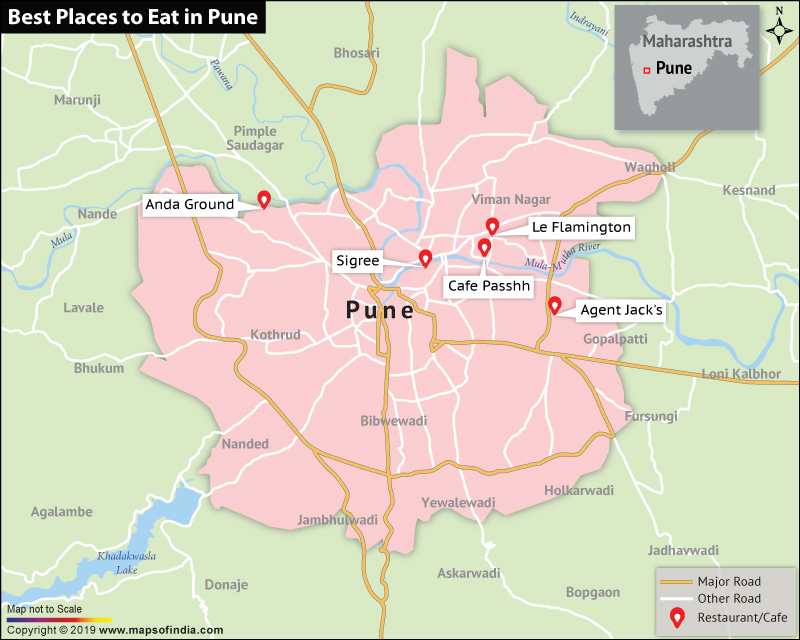Unexpected rain could not dampen our spirits. In fact, our driver did a good job despite the grey wrap of mist on the Jaipur-Alwar state highway. It took us three hours to reach Viratnagar from Jaipur. The last 20-km drive was on a narrow road meandering through the fields. That reduced the driving speed. But the rain also created some cheers. Fields, plants and trees had a pristine look. The air was clean.
As we approached the town, the hills balancing the boulders of weird shapes and supporting thin vegetation cover appeared on the horizon. Urban noise made way for rustic tranquility.

By the time the driver parked the car outside Shri Digambar Jain (Parshvanath) Nasiya Temple, our first stop of the day, rain had stopped. A few visitors were already there. The temple door was locked.

We walked within the temple compound consisting of a marble pillar, a statue of Lord Parshvanath, a guesthouse, a number of old Mughal-style structures, and an old stepwell that was dry.

The temple dedicated to Lord Parshvanath, one of the Tirthankaras (saviours) of Jainism, is made of marble. You can easily identify the saviour by the snake-hood canopy over his head. The canopy is part of all his images, paintings, and sculptures because, according to legends, a black serpent crawled by the side of his mother when she was pregnant.

Mughal Gate, the next destination, was a few steps from the temple. However, we had to wait till the rain ran out of steam.

We strolled through the multistorey yellow gate standing amid lush fields. The sky changed its hue from flat grey to dramatic blue and grey.

A brigade of kids exuded curiosity at our arrival. Excited faces could also be seen among them.

This protected monument is considered a replica of Taj Mahal. Old frescoes are still there. Raja Man Singh had built the gate for Emperor Akbar in the 16th century. The emperor used to halt here during his hunting expeditions and tours to Ajmer.

We drove to our third destination of the day: Pandu Caves and museum at Bhim Ki Dungari (Pandu Hill). It was quiet on the weather front. We walked up to the main cave from the parking lot.
From the dungari, we got a bird’s eye view of the Mughal Gate and the Jain Temple. A huge cave in the hill houses a statue of nandi and a shivling decorated with 12 faces of Shiva in black stone. Many other caves, which are believed to be used by the brothers of Bhim, are also located nearby. Some of these caves feature rock edicts. Out of these, some edicts are illegible. The readable edicts have already been transferred to the museums.

Viratnagar (Bairath), the capital of ancient Matsyadesa, is a historically important place because of the following reasons:
- According to legends, Pandava brothers (Mahabharata) spent 13-year agyatwas (exile) in the town ruled by King Virat.
- It was the venue for the parleys initiated to avoid the war between Pandavas and Kauravas. The King Virat used to act as a peacemaker during these parleys.
- The cave shelters found in the town are testimony to pre-historic communities. Two specimens of Stone Age shelters are on the Beejak ki Pahari, where remains of a Buddhist monastery and stupa still await their celebrity visitor King Asoka. According to legends, Asoka used to frequent this place and meditate here. The town was famous for its copper mines.
While going to Beejak ki Pahari (Hill), rain did not accompany us for long.
A short and wide stony path connects the ruins of Buddhist stupa at the top and the parking space below. The hill commanded sweeping views of the town!

During the excavations at the hill in 1930s, the remains of the Mauryan stupa was found. It was made of wooden pillars and bricks joined with lime plaster. There were 26 octagonal pillars. None of these exist today. The Asoka inscriptions discovered from here belong to 3rd century B.C.
Even before we could see all the attractions in Viratnagar, evening was upon us. The place is really true to its name , which means a vast place. It needs at least two days to see entire legacy of King Asoka, protagonists from the epic Mahabharata, and other legends.





